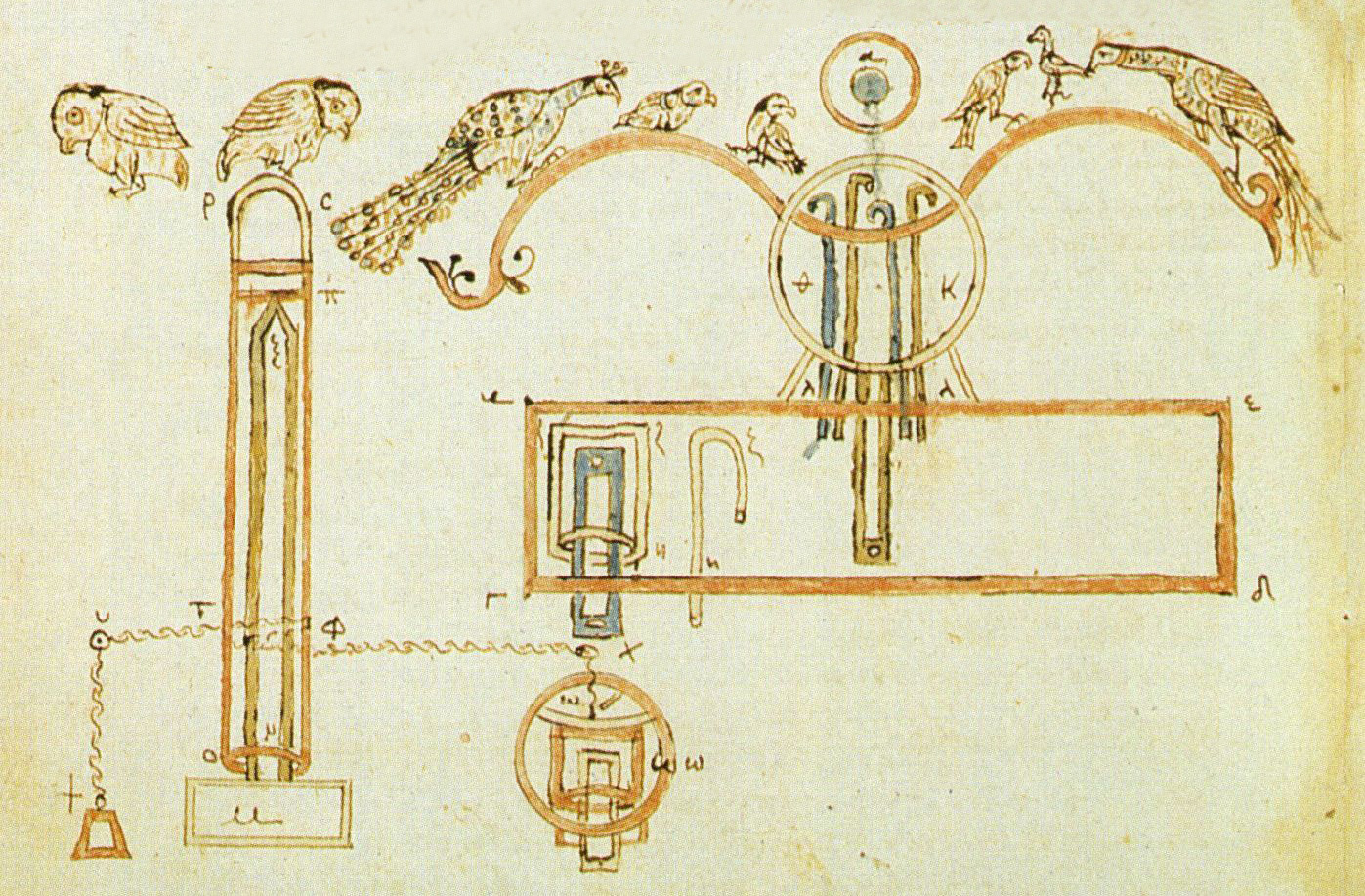Tinkering: Clockwork Wonders for LARP & RPG Games, Part 3

Tip of the hat to Hero of Alexandria
Making an ongoing column and writing exercise! If I manage to “crank” out enough of them, I’ll see about giving them their own dedicated collection page.
Tinkering, by any other name, is a catch-all term for making devices, gadgets and clockwork wonders. Mainstay of Steampunk, it also has enjoyed a presence in the fantasy genre settings in the form of traps, locks and more exotic manufactured wonders. While typically not considered magic, such items can often mimic magical effects or exceed the realms of purely mundane mechanisms. Whatever the case may be in your game setting, I’m hoping to make this column a regular creative writing exercise and a fun resource.
Obviously, the exact game mechanics and physical-representations will vary depending on the system and settings, but I’ll try to keep them fairly generic (with the occasional nod to my favorite settings and references).
This peculiar looking orb is typically constructed of a smooth lightweight metal and fits easily in the palm of a hand. When thrown, the sudden motion triggers three panels on its exterior to open, each reeling out a few feet of strong cable terminating in a heavy weight. When these strike a foe, they tangle about their legs and feet, hobbling movement. A series of hooks makes it impossible to disentangle oneself easily or quickly (doing so with superhuman strength typically results in injury and destruction of the device). 1 minute of careful, dedicated action by the victim or an ally will free them. The owner typically knows the secret sequence that causes the cables to retract harmlessly instantly. Careful and tedious rewinding for 5 minutes is necessary to reset the device.
Whether in the form of heavy spats, or incorporated into armored greaves, this device functions exactly the same. When a force is applied to the user that would knock them down or back, a set of mechanical buttresses extend and perfectly stabilize the wearer. Once they have served their purpose, the buttresses retract so as not to hinder the wearer. However, it takes some time reset the mechanism so it cannot be used in rapid succession.
At first glance, this appears to be the sort of mallet used by a variety of craftspersons. Within are a series of chambers filled with a special oil and acoustically resonating chambers. While not suitable for combat, it can be used to gingerly tap surfaces and object to discern voids, hollows and hidden spaces. This process takes 10 seconds per object or 5’ surface. This use does not expend the hammer’s properties, but alternatively the user can strike the hammer on the ground with violent force. Doing so shatters the delicate chambers and causes the oil within to react violent. The resulting vibrations disrupt invisibility and concealment effects within 10’ feet of the point of impact and continues to do so for 1 minute. When used in this manner, the hammer is utterly destroyed and unsalvageable.
These bands of thick cloth are surprisingly elastic, accommodating even heavily muscled arms or legs. Occasionally they are incorporated directly into armor or garments, but they can just as easily be worn under them as well. When the limb suffers sufficient damage to result in uncontrolled bleeding or other imminent demise, the cuff activates stabilizing the injury in short order. Each cuff only protects a single limb and cannot be reused once activated. They are not sufficient potent to protect the torso or head.
The patches are constructed from multiple, sandwiched layers of canvas and exotic compounds and finally sealed with a waxy tar-like substance. Affixed to the striking surface of a weapon, they delivery an explosive punch upon its first impact, increasing the potency of the weapon’s strike. Each patch may only be used once and, will destroy projectiles and smaller weapons when used on them.







